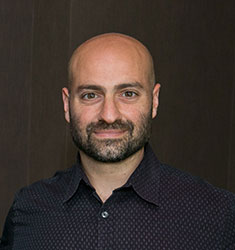Combined with AI, digital twins have the power to reshape how products are designed, produced and improved.
By Sef Tuma, Global Lead – Accenture Industry X, Intelligent Products and Platforms, and Matthew Thomas, North America Lead, Accenture Industry X, Engineering
Many companies have started experimenting with digital twins. For example, they use digital representations of physical objects, systems or processes during the validation phase of products to monitor, analyze and simulate their physical counterparts. However, digital twins have a much broader role to play. The technology promises to completely change how products and services are designed and built if companies embed more intelligence in the process.
The key is to combine digital twins with artificial intelligence (AI). This enables the physical product to be brought closer to customers, shrinks manufacturing cycles and spark creativity.
AI-powered digital twins promise to deliver automated, agile and customer-led development. In this scenario, products are never truly finished. Even when in the hands of customers, they’re evolving continually through updates based on two-way connections between the product and its digital twin. As new data emerges about real-world usage and customer needs, it can immediately be used to design new features.
Put more simply: AI + digital twins mean that even the simplest product can become a “living” object that evolves as customer needs change. As ground-breaking as this approach is, it is also quite complex. Businesses will need to put tools in place that enable collaboration at scale across and between manufacturers, designers and end-users. Meanwhile, product teams will need to engineer components that are adaptable enough to complement these living products as they evolve.

Digital twins facilitate dialogue between designers, clients, marketing, product managers and manufacturers.
Digital twins also support “what if” scenario modeling to help improve decision making across development. AI-supported designers can create countless digital versions of products to see which works best before moving to physical production.
This customer-led approach to product development embeds the customer voice from the outset. “Lot size one” producing becomes possible, enabling personalized, contextualized and even individual-use products. This design task is made easier by AI. Virtual assistants can share the load with human designers by validating processes, reducing the likelihood of missed constraints and critically identifying more opportunities for innovation.
Combing digital twins with AI also fosters agile development and servicing. Already, advances in flexible manufacturing, modular design and automated engineering have made it possible to update and refine designs quickly and affordably. Digital twins can render this process even smarter – by acting as a single source of truth for all stakeholders in the development cycle. The twin provides visibility into everything from cost and lead time for parts to materials and manufacturing skillsets.
Take heavy equipment manufacturers, which are shifting focus from sales to include a much higher mix of services to customers. AI-powered digital twins can make it easier for their customers to find and procure spare parts compatible with their equipment. It also helps ensure that the right amount of spare parts are available in the geographies where they will be required. The way it works is that the twin integrates design engineering data (Part A is compatible with Models X, Y but not Z), manufacturing details (Model X contains Parts A, B but not C), where specific models were sold (Models X and Y with Parts A and B are in Geographies 1 and 2) and how quickly parts typically need to be replaced.
The combination of AI and digital twins is a key move towards delivering products as a service rather than a one-off purchase. But this new way of understanding products also calls for a new approach to business; one where we can expect to see extended ecosystems of manufacturing, retail, cloud-based services and distributed networks of devices emerge around companies.
How can businesses make this vision of AI-augmented, automated, customer-led production a reality? Each company will have its own starting point based on the maturity of its data and AI capabilities. As businesses gather more and better-quality data, and as they invest in more sophisticated solutions and automation, the outcomes of their AI-twin solution will improve. We see this journey progressing along four steps:
The combination of digital twins and AI enabling companies to fundamentally change product development is only a small part of a much larger change. It will increasingly represent the difference between inflexible, backward-looking companies and those that are continually evolving to meet new needs and adapt to new trends. Companies looking to implement digital twins should make sure to do so with this big picture in mind.

Sef Tuma
Sef Tuma is a Managing Director and Global Lead for Accenture Industry X’s Intelligent Products and Platforms business. His practice covers R&D digitization, product development and platform engineering capabilities to help clients across industries make products intelligent with the power of software and build new business through connected product platforms. Sef has extensive experience planning and delivering strategic initiatives in digital products and platforms and close to 25 years of experience across traditional and digital native industries.

Matthew Thomas
Matthew Thomas is a Managing Director and North America Lead for Accenture Industry X’s Engineering Digitization practice. His focus is on transforming the work that clients’ engineers do and helping them release the value locked within their product data. Matt has more than 20 years of experience in engineering and manufacturing as well as leading transformation programs across multiple industries to create Digital Twins by enabling a Digital Thread across the products data.
This article is based on Accenture’s ‘Digital Twin Done Right’ report.
In this episode, I sat down with Beejan Giga, Director | Partner and Caleb Emerson, Senior Results Manager at Carpedia International. We discussed the insights behind their recent Industry Today article, “Thinking Three Moves Ahead” and together we explored how manufacturers can plan more strategically, align with their suppliers, and build the operational discipline needed to support intentional, sustainable growth. It was a conversation packed with practical perspectives on navigating a fast-changing industry landscape.